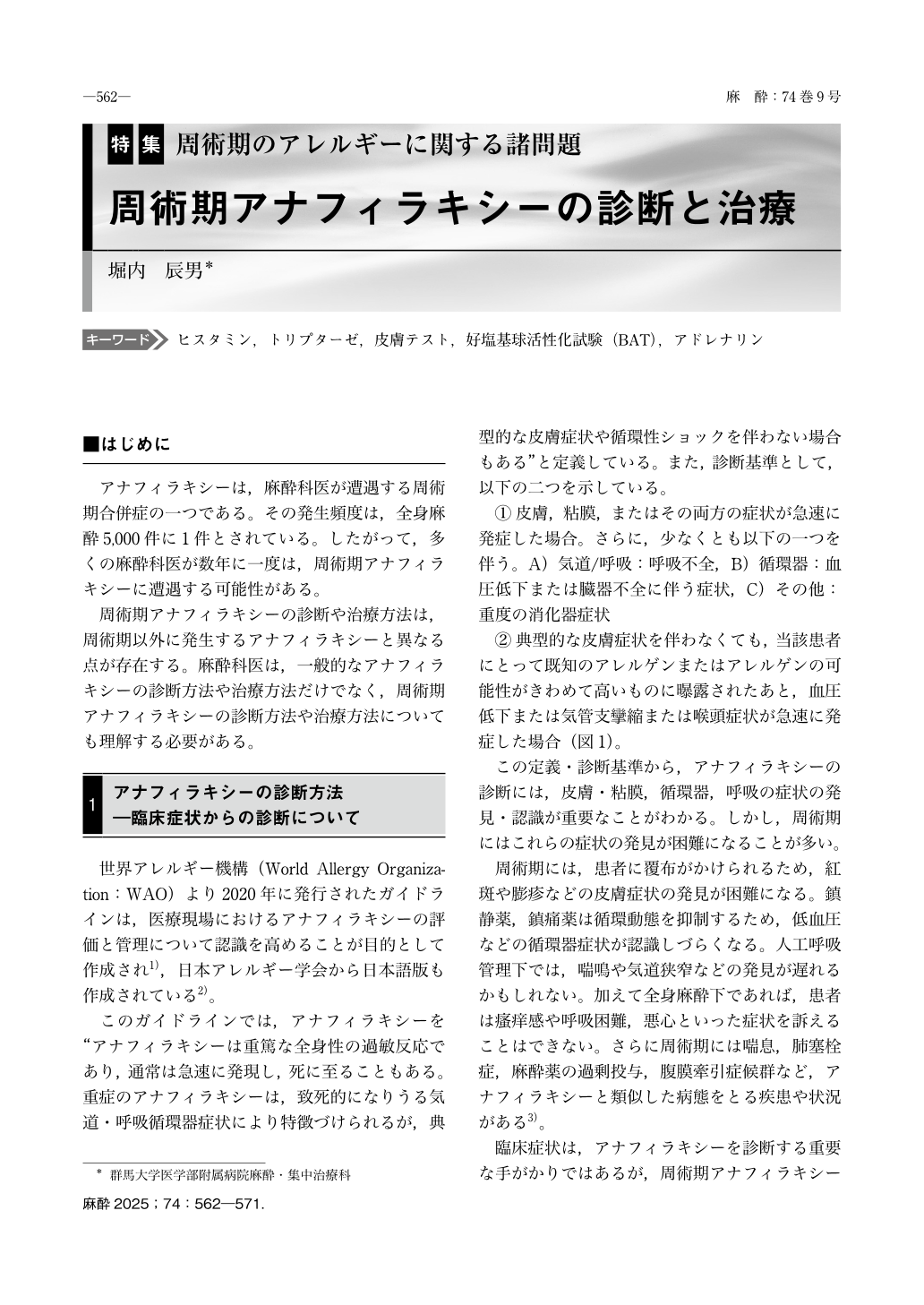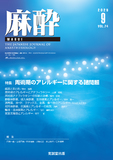Japanese
English
- 有料閲覧
- Abstract 文献概要
- 1ページ目 Look Inside
- 参考文献 Reference
はじめに
アナフィラキシーは,麻酔科医が遭遇する周術期合併症の一つである。その発生頻度は,全身麻酔5,000件に1件とされている。したがって,多くの麻酔科医が数年に一度は,周術期アナフィラキシーに遭遇する可能性がある。
周術期アナフィラキシーの診断や治療方法は,周術期以外に発生するアナフィラキシーと異なる点が存在する。麻酔科医は,一般的なアナフィラキシーの診断方法や治療方法だけでなく,周術期アナフィラキシーの診断方法や治療方法についても理解する必要がある。
Anaphylaxis is a common perioperative complication, with an incidence of 1 in 5,000 general anesthesia cases. It is difficult to diagnose perioperative anaphylaxis based only on a patient’s clinical symptoms since the clinical symptoms might be masked during anesthesia and surgery and could be mistaken for other conditions. A clinical scoring system was recently shown to be useful for estimating the likelihood of perioperative anaphylaxis based on clinical symptoms. Blood tryptase and histamine levels are helpful in the diagnosis of perioperative anaphylaxis. Skin testing is the gold standard test for retrospectively diagnosing the causative agent of perioperative anaphylaxis, but patients often refuse skin testing due to its potential complications. In such cases, in vitro tests for diagnosing perioperative anaphylaxis are required. The basophil activation test has been reported as useful for diagnosing perioperative anaphylaxis. The treatment of perioperative anaphylaxis is the same as that for anaphylaxis due to food allergy or insect bites, except for the administration route of adrenaline(the most essential agent for treating perioperative anaphylaxis. Several guidelines related to perioperative anaphylaxis recommend that adrenaline should be administered intravenously.

Copyright © 2025 KOKUSEIDO CO., LTD. All Rights Reserved.


